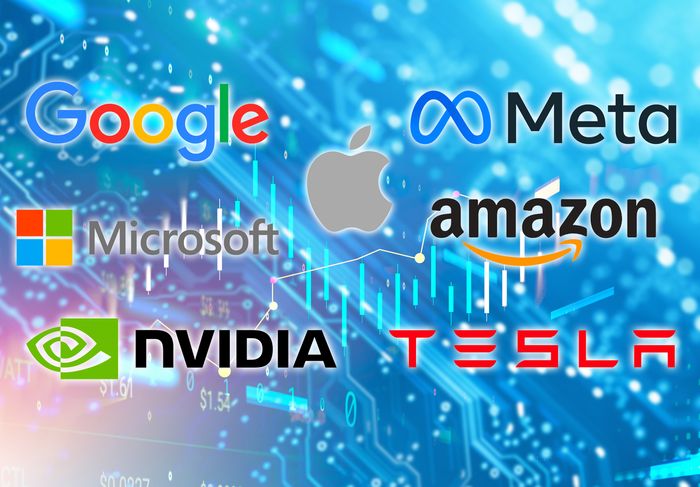The Magnificent Seven is a term coined to describe the seven most valuable and popularly owned tech companies in the U.S. stock market.
It was also a 1960’s movie…
The Seven
Apple (AAPL)
The world’s largest software company, known for its iPhone, iPad, Mac, Apple Watch, AirPods, and other devices, as well as its services such as iCloud, Apple Music, Apple TV+, and App Store.
Microsoft (MSFT)
The world’s largest software company, known for its Windows operating system, Azure cloud services, LinkedIn social media platform, Office professional software suite, and Xbox gaming brand.
Alphabet (GOOGL)
The parent company of Google, the world’s leading search engine, as well as other businesses such as YouTube, Google Cloud, Google Maps, Google Ads, and Waymo.
Amazon (AMZN)
The world’s largest online retailer, as well as a leading provider of cloud computing services through Amazon Web Services (AWS), and a major player in digital entertainment through Amazon Prime Video, Amazon Music, and Kindle.
Meta Platforms (META)
The former Facebook, the world’s largest social media network, as well as the owner of other popular platforms such as Instagram, WhatsApp, Messenger, and Oculus.
Nvidia (NVDA)
The world’s leading manufacturer of graphics processing units (GPUs), which are used for gaming, artificial intelligence, cloud computing, and cryptocurrency mining, as well as other products such as Nvidia Shield, GeForce Now, and Omniverse.
Tesla (TSLA)
The world’s most valuable automaker, known for its electric vehicles, battery products, solar panels, and self-driving technology, as well as its visionary founder and CEO, Elon Musk.
Market dominance
These seven companies are not only dominant in their respective fields, but also at the forefront of innovation and growth in the tech sector. They collectively make up some 30% of the S&P 500 index and more than half of the Nasdaq 100 index.
They have also delivered impressive returns for investors over the past five years, with Nvidia and Tesla leading the pack with more than 800% gains. The Magnificent Seven are often compared to the FAANG stocks, which include four of the seven companies, but exclude Microsoft, Nvidia, and Tesla, and include Netflix instead.
Some analysts suggest that the Magnificent Seven capture the current state and future potential of the tech industry. But is it now time to rotate out of tech into other areas that have been neglected. I wouldn’t be surprised to see the bull market charge on but with other ‘less’ loved companies leading the way.
It has been calculated that the combined market cap value of these seven companies is some $9 trillion.









































